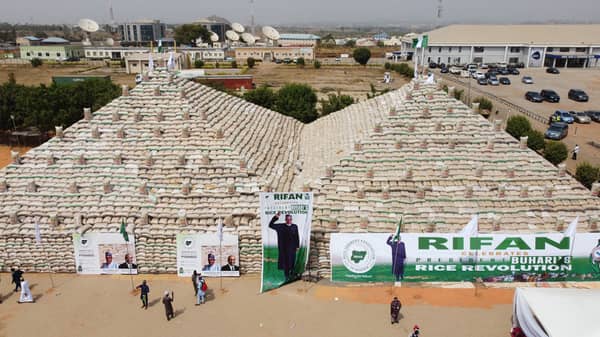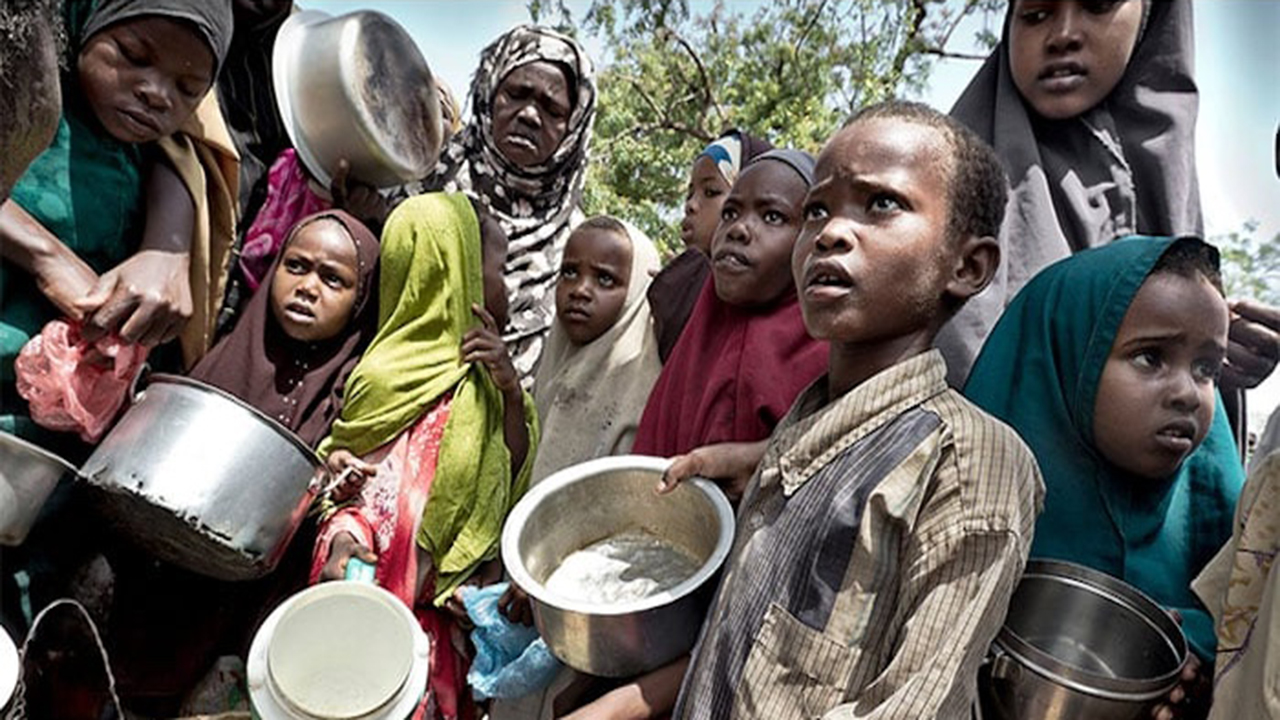
• ‘Production per hectare must go up for price to come down
Rice is among the few critical grains consumed by the growing world population as the current global production reaches 755,473,800 tonnes per year, but Nigeria is yet to maximise its potential to meet local demand as well as for export.
With technologies, improved planting materials and farm mechanisation, China, India, Indonesia, the United States of America and Thailand, among others, have mastered rice production techniques and are leading the pack.
China, producing 211,405,211 tonnes of milled rice yearly, is ranked the largest producer, closely followed by India with 177,645,000 tonnes. As large as their populations are, so also is their rice production capacity, producing more than 50 per cent of the world’s total rice.
International trade data also show that “in 2019, India, Thailand, Pakistan and Vietnam were large net exporters of rice, shipping out nearly $16 billion worth of rice combined.”
Other countries like Nigeria, Iran, China, Saudi Arabia and the Philippines, consume more than they produce and rely on imports, and in the case of Nigeria, smuggling, to meet their demands.
Nigeria’s rice production level so far
Nigeria imported 2.1 million metric tonnes (MMTs); 1.8MMTs; 1.800MMTs; 1.9MMTs and 2.0MMTs from 2017/2018 to December 2021/2022 seasons respectively.
This is disclosed in a report tagged, ‘Grain: World Markets and Trade – December 2021,’ by the United States Department of Agriculture Foreign Agricultural Service.
Whereas, the country produced 4.47MMTs; 4.53MMTs; 5.04MMTs; 4.89MMTs and 5.00MMTs from 2017/2018 to December 2021/2022 seasons respectively.
However, Nigeria’s rice consumption from 2017/2018 to December 2021/2022 seasons respectively, were 6.750 million tonnes; 6.800million tonnes; 6.850 million tonnes; 6.900 million tonnes, and 6.950 million metric tonnes.
Similarly, the Thai Rice Exporters Association (TREA), in its latest report, reiterated Nigeria’s production figures at 4.47 million tonnes; 4.54 million tonnes; 5.04 million tonnes; 4.89 million tonnes and 5.00 million tonnes from 2018 to early 2022 respectively.
Specifically, the country’s consumption of 6.95 (almost 7.0) million metric tonnes and production of 5.000MMTs leave a deficit of approximately 2.00 million metric tonnes.
The contradiction, however, is that no importation is allowed officially, but analysts say the deficit, like many other prohibited agro-allied products, comes to the country through smuggling via the porous borders with neighbouring countries.
Mills and milling capacity per year
A project coordinator in one of the major rice mills in Nigeria, who demanded anonymity, told The Guardian that 40 medium-scale to large-scale rice mills currently operate in the country.
The yearly combined milling capacity of the 40 mills is between 2.0 and 2.5 million metric tonnes of rice. The implication is that small-scale and cottage rice mills are responsible for about 2.5 million metric tonnes as the country produces 5.0 million metric tonnes of milled rice per year based on the report by USDA and TREA.
In contrast, Governor of the Central Bank of Nigeria (CBN), Godwin Emefiele, said recently that as of January 2022, there were over 68 integrated mills with a combined capacity of 3.0 million metric tonnes.
He had explained that the Anchor Borrowers’ Programme (ABP), introduced in 2015, stimulated rice cultivation, processing and other value chain activities, saying about 10 more integrated mills would be opened this year.
Among the expected integrated mills is the approximately 32-tonne-per-hour Lagos State Integrated Rice Mill at Imota, Ikorodu, which the governor, Mr Babajide Sanwo-Olu, said would be ready for operations by the end of the first quarter of 2022.
The governor gave the assurance after he toured the project site in late 2021, saying that the facility would undergo a pre-production test run before the end of Q1 2022, after which its full production capacity would begin.
However, an investigation by The Guardian revealed that construction work was still ongoing, which might take another three or more months before completion.
An insider in the state Ministry of Agriculture, who was not authorised to speak on the project, said construction was still going on as of April 3, 2022, and could not ascertain when the mill would be ready.
Agro-economic analysts have also foreseen that supply of steady and adequate paddies to the Lagos mill could be a challenge as commercial or large-scale rice production is not done in Lagos.
Although, a former Commissioner for Agriculture in the state, Gbolahan Lawal, had disclosed to The Guardian that the state would explore out-grower models in states with agro-ecologies to produce paddies, such as Ogun, Osun, Oyo and other states to feed the mill.
Rice cost, impact on consumers
President Muhammadu Buhari, while unveiling the controversial rice pyramid in Abuja in January 2022, said his food security agenda would reduce the prices of food soon.
The Rice Farmers’ Association of Nigeria (RIFAN) assembled about one million bags of raw rice in the carnival, stating that members of the association were capable of producing enough rice.
At the event, Ekiti State Governor and Chairman of Nigeria Governors’ Forum, Dr. Kayode Fayemi, while making a remark on the rice pyramid, had said the next agenda of the administration’s food security programme would be the affordability of food items.
But the reality in the country points to the contrary as prices of basic food items, from fruits to cereals, as well as processed food, have increased drastically in the last two months. Inflation as of March 2022, driven by a hike in food prices, reached 15.92 per cent, from 15.70 per cent recorded in February.
A price survey by The Guardian revealed that a 50-kg bag of locally processed premium rice is N35, 000 in most supermarkets and rice depots, while the lowest price is about N24, 500, mostly processed and packaged by emerging small to medium-scale factories. Brands of rice from integrated rice mills cost between N28, 000 and N35, 000, but they are comparable with polished foreign rice.
Some processors who spoke with The Guardian said to remain in business, increasing the price of processed rice is inevitable in the face of higher prices of paddies, expensive power generation amid the failing national electricity grid and high cost of transportation, as well as labour cost.
“A litre of diesel is currently about N700, and running on diesel-powered generators 12 to 24 hours does drive up the average cost of production significantly,” Managing Director, Vertex Rice, a small-scale rice mill in Lokoja, Kogi State, Mr Afis Oladejo, said.
Again, one of the integrated millers said: “Everything that goes into rice cultivation (such as herbicides, insecticides and fertiliser) and processing (such as energy, maintenance, packaging materials and transportation) are expensive because most of them are imported amid the falling value of the naira compared with the dollar.”
Overall, prices of brands of locally processed rice have gone beyond the reach of ordinary Nigerians.
Production, processing challenges and way forward
Country Representative, Nigeria and Regional Coordinator, Africa Rice Centre, Dr. Francis Nwilene, said the milling capacity could be divided into three categories of small milling of 5.0 to 20.0 metric tonnes per day; medium capacity of 30 to 80 tonnes per day and high capacity of 100 and above tonnes per day.
He also pointed out high cost of power to run farms and mills as a major challenge. Most of the mill operations depend on independent power generation through generators. To him, this contributes to the high cost of locally processed rice.
“Reasons for high prices of rice in Nigeria,” Dr Nwilene added, “are high cost of labour, high cost of inputs (fertiliser, certified seeds), high cost of land preparation using machines such as power tillers and high cost of mechanical harvesting using rice threshers.”
As an insider, he disclosed that “some middlemen and millers usually mop up rice paddies and keep them in warehouses,” creating scarcity, and causing hikes in the price.
To increase the rice productivity of farmers per hectare, the rice breeder said incentives such as subsidised loans to buy production inputs (seed, fertiliser and agrochemicals) should be put in place for rice farmers.
“There should be,” he said, “free or subsidised mechanical land preparation techniques – ploughing, harrowing and puddling, reduction in the cost of rice harvesting and processing equipment, and low-interest rates for rice producers and processors.”
The project coordinator (demanding anonymity) identified insufficient production of rice locally as a major factor determining the high price. He said higher demand oversupply would naturally cause higher prices not only for rice but other food items.
To stem the tide, as suggested by the Africa Rice boss, he advocated increased productivity per hectare.
And to achieve a higher yield per hectare, he recommends massive farm mechanisation; adequate and affordable inputs, including fertiliser, agrochemicals, and true-to-type improved seeds.
True-to-type rice varieties, according to Africa Rice Centre, are capable of giving a farmer 4.0 to 7.0 metric tonnes of rice paddies per hectare. If this is attained for the majority of the rice farmers, Nigeria would close the deficit soon.
But on average, most farmers produce about 2.0 metric tonnes per hectare using low-yield or adulterated hybrid varieties of rice seeds.
Apart from mechanisation and adequate quality inputs, both experts said irrigation facilities should be expanded as rice is “a water-loving plant and rain-fed agriculture is not adequate to feed the growing population.”
Meanwhile, irrigation facilities that supply water to farmers in Kano and Jigawa States have been shut down for repairs.
The Tiga Dam irrigation channels, servicing about five local government areas of Kano and some parts of Jigawa State would be reopened in June 2022, according to the state government.
“We have to shut down the Tiga Dam to enable repairs to be carried out. Although, the shutdown of the dam was not done by the Kano State government, but Hadeja Jamaare River Basin. The contract was under them to carry out works on the dam.
“For all these years, we have been delaying the execution of the contract for renovation, restructuring and extension of the irrigation facility by a company called ‘Transforming Irrigation Management in Nigeria (TRIMING),” Kano State government had said earlier in the year. The shutdown, farmers said, would affect rice paddy production.
Lack of affordable improved varieties, expensive fertiliser and agro-chemicals to growers, and higher-than-normal cost of energy and transportation borne by millers, farmers and processors said, must be addressed and reversed to ensure rice and food sufficiency in Nigeria.
Prominent states investing in rice cultivation in the country through the Anchor Borrowers’ Programme or independently include Cross River, Akwa Ibom, Ogun, Oyo, Kebbi, Kano, Ebonyi and Lagos.
Huge national investments, higher food prices
NIGERIANS have expressed dismay over the rising prices of food despite frequent injections of funds to the agricultural sector through various intervention schemes of the Central Bank of Nigeria (CBN).
The apex bank Governor, Godwin Emefiele, during a Monetary Policy Committee meeting in Abuja in late 2021, said CBN had so far spent N864 billion on 4.1 million farmers cultivating 5.02 million hectares through the Anchor Borrowers’ Programme (ABP).
Also in January this year, while unveiling paddy rice pyramids assembled by the Rice Farmers’ Association of Nigeria (RIFAN) in Abuja, President Muhammadu Buhari disclosed that six years after inaugurating the Anchor Borrowers’ Programme (ABP) in November 2015, over 4.8 million small-scale farmers had been supported to increase food production.
He said: “The Anchor Borrowers’ Programme has so far supported over 4.8 million smallholder farmers across Nigeria for the production of 23 agricultural commodities, including maize, rice, oil palm, cocoa, cotton, cassava, tomato, and livestock. Today, rice production in Nigeria has increased to over 7.5 million metric tonnes annually.”
However, critics have said 5.0 million tonnes of rice is being produced yearly, amid higher prices of locally produced brands of rice, in particular, do not justify huge amounts of national resources released through the scheme.






